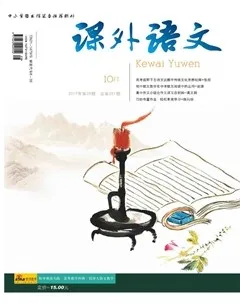Earl W.Stevic的语言教材观
【摘要】美国语言教育家Earl W. Stevic有丰富的语言教学思想。本文讨论Earl W. Stevic在其所著的《语言教学方法论——问题出在哪儿?》(Working with Teaching Methods: What`s at Stake?)一书中有关语言教材的基本观点,即符合全人学习者特征的教材观。
【关键词】全人学习者;语言教材观;阻碍因素;促进因素
【中图分类号】H09 【文献标识码】A
语言教材与教学方法、学习者、教师都有着天然的联系,优秀的语言教材必须处理好以上这些关系。
一、全人学习者(materials and the whole learner)的语言教材观
语言学习者是一种全人学习者。关于全人学习者,Earl W. Stevic有以下几点基本认识:
1.学习是学习者的一种自我行为,只有学习者没有受到来自教师的负面干扰时才会有最佳的学习效果;
2.学习者的生理、情绪、认知不可互相脱离,互不影响(The so-called physical,emotional,and cognitive aspects of the learner cannot in practice be isolated from one another,P.50);
3.学习者互不分离,构成一个学习社团,影响着彼此的学习效果(The people in the classroom are not seperable from one another: they inevitably make up a more or less successful community,P.50);
4.全人学习者的需求不只是取得好的成绩或赢得赞许,还包括有安全感、有预知能力、团队归属感、行为有意义感(The needs of the whole learner go beyond the need for achievement and approval……they also include needs for security, predicatability, group membership, and the feeling that what one is doing makes sense in terms of some overall and deeply satisfying life pattern,P.50)。
语言教材应符合全人学习者的以上特征。
二、语言教材编写时的投入、产出(investment,yield)
在语言学习中,教师、教材编写者、学生都有投入(investment),都期望产出(yield),都承担着一定风险(risk),都对其他二者产生影响(power)。
在教材编写者、教师和学生之间的传统关系中,教材编写者投入时间、精力等来编写教材,选择编写什么和怎么编写,其风险是教师不会选该教材或学生不会用该教材;教师的投入是给学生选择某一教材,要求学生怎么使用该教材,其风险是学生的使用未能带给教师一种成就感或使教师在其同事中赢得好名声;学习者的投入是其学习行为,而风险是成绩低、同学的鄙视,甚至还伴有教师的不满情绪。在这一传统关系模式中,教师对学习者、对教材编写者都有很大的影响力,教材编写者能为教师编写什么教材,取决于教师给学习者选择什么教材。而学习者也不是对教师没有影响,教师有个人成就感的需求,这种成就感来自学习者优异的学习成绩,学习者可以用学得好或不好来回报或“惩罚”教师。
这些不同关系中的投入与产出因素都影响着语言教材的编写。
三、语言教材中应避免阻碍全人学习者的因素(blocking the whole learner)
全人学习者体现于学习者的毎一个行为之中。但在教材编者、教師、学习者的传统关系模式中,学习者的生理、情绪、认知因素之间未能和谐地融为一体,有些部分相对更加不活跃,有些部分甚至互相干扰(The whole learner is present in every one of his or her act. But in the tradional model, parts of the learner`s mind and personality are not working in harmony with on another. Some parts may be relatively inert, and some may even be working at cross purposes with each other,P.51)。
英语教材中常编有句型操练的内容,如:X有人口Y(X has a population of Y,P.52)。教材中列出的X分别是一些城市或地区的名字,Y则是一些人口数字。编写这类教材操练背后的语言教学方法则是替换操练,操练中,学习者分别把X和Y替换成一些城市的名字和人口数字,学习者必须练习一些不熟悉的城市名字的发音,必须说出一些长串的数字。如果操练得好,就会得到教师、自己和同学的表扬。如果学习者相信这样的教材和操练的方法,还会有一种教材和方法符合自己语言学习最终目标的满足感。
这是教材内容的一个例子。从人际关系的心理分析(Transact-
ional Analysis,P.52)看,这类教材和教师扮演的是一种家长的角色,教材和教师安排学生学这个学那个,然后评价学习者做得怎么样。学习者则按照要求去做,以便家长能得到他们所希望的结果。除此之外,这类操练中没有学习者的个人人格因素的参与:没有身体活动,没有趣味,没有审美愉悦,没有学习者渴望形成并把握这个世界真实图景的满足感(There is nothing in the drill for the Child part of the student`s personality: no physical activity, no fun, no aesthetic pleasure. Nor is there very much for the Adult part of the student`s personality, which is the part that is concerned with forming and maintaining an accurate picture of the world,P.52)。学习者在这类句型内容的操练中,身体处于一种消极状态中,而学习者的两种自我(the critical self and the performing self,P.24)也没有什么投入。安全需求只得到了低程度的满足,个体的团队归属感并没有增长,得到他人尊重的需求也未能获得满足。学习者没有机会去自己探索,发挥主动性,自己进行判断,也不会产生符合自己语言学习最终目标的满足感。总之,这类教材内容的操练不能激发全人学习者生理、情绪、认知的因素和谐地协同工作(This drill is hardly an activity in which the whole learner is involved in any coordinated, internally harmonious way,P.53)。
另有一些教材编者,也努力让内容幽默有趣,配以生动的图片,选编符合学习者职业兴趣的主题,并让学习者有一定的自由对内容进行取舍和作出反应(Sometimes they do provide humor, or attractive pictures, or subject matter especially chosen to fit the student`s professional interests, or a carefully limited amount of freedom for the student to devise her own responses,P.53)。但核心内容一样:教材和教师安排学生学这个学那个,然后评价学习者做得怎么样(Try to perform this linguistic task so that we may tell you how well or how poorly you performed it,P.53)。这是阻碍全人学习者的典型模式:对抗的或判决式的评价模式(the confrontational or judgemental Evaluation Paradigm,P.53)。这样的教材内容不符合全人学习者的特征。
四、语言教材中应增加促进全人学习者的因素(Activating the whole learner)
促进全人学习者的语言教材需包含以下要素:
1.既包含满足认知需要的要素,也包含满足情绪需要的要素(There should be something for the emotions as well as for the intellect,P.53);
2.既提供同学之间互动的机会,也提供学习者和教师之间互动的机会(The materials should provide ocassions for the students to inter-
act with one another as people,or with the teacher as a person,P.53);
3.既包含符合学习者现时需要的内容,也包含符合长远目标的内容(The materials should allow students to draw on present realities as well as on their distant future goals,P.54);
4.包含涉及以上三方面的學习者可以自主选择的内容(The m-
aterials should provide for the students to make self commiting chioces,P.54);
5.满足学习者的安全感需求(Design of the materials should con-
tribute to the student`s sense of security,P.54)。学习者投入后的产出是安全感的重要来源,而教材则是另外一个来源。安全感的程度决定学习投入的深度和强度,投入的深度和强度则决定着学习的质和量。情感要素是影响记忆的形成与重塑、组构与再组构的核心要素(Here is the central role of affect in the constant shaping and reshapi-
ng,organizing and reorganizing of memories,P.54)。
具体地说,教材应该有学习者想要的东西,有获得想要的东西的路径,有清晰的指导意见,让学习者有安全感、归属感。只有这样,才是更符合全人学习者特征的教材。
参考文献
[1]Stevic,Earl W..Working with Teaching Methods:What`s at Stake?[M].北京:外语教学与研究出版社,2006.
[2]Fredric,Jones H..Tools for Teaching-discipline,Instruction, Motivation. Fredric H. Jones & Associates, Inc[M].北京:外语教学与研究出版社,2007.
[3]Becker,Hamayan.Teaching ESL K-12—View from the Classroom[M].北京:外语教学与研究出版社,2003.
作者简介:刘云峰,男,1963年4月,汉族,江西永丰县,博士,副教授,现代汉语和语言教学。
(编辑:龙贤东)

